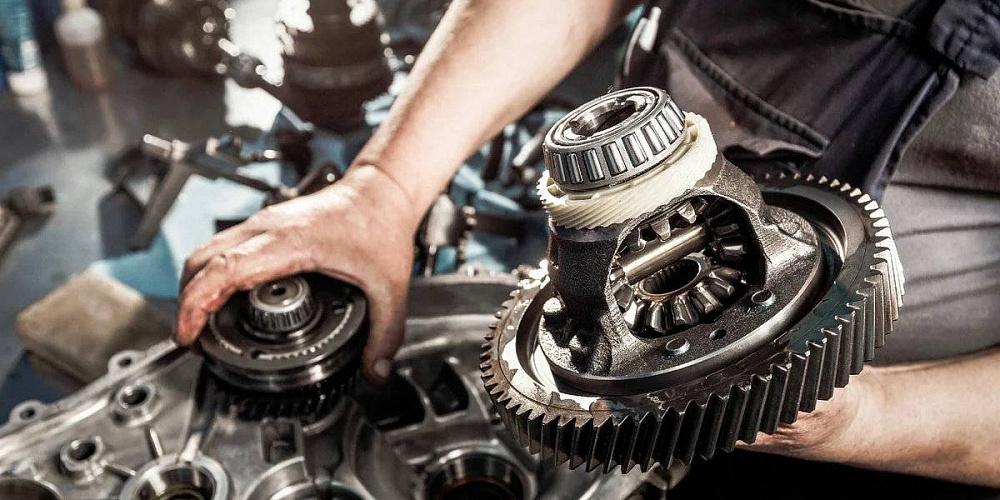Automotive Gear Market Segmentation by Vehicle Type: Passenger, Commercial, and Electric Vehicles

The Automotive Gear Market is intricately linked to the dynamics of different vehicle categories—each with unique design requirements, performance expectations, and transmission needs. As the automotive sector grows increasingly diversified with the addition of electric and hybrid vehicles, gear manufacturers are adapting to serve multiple vehicle segments, from everyday passenger cars to heavy-duty commercial trucks.
This article explores how the Automotive Gear Market is segmented by vehicle type—passenger vehicles, commercial vehicles, and electric vehicles (EVs)—and how demand patterns, technological advancements, and performance needs vary across each.
1. Passenger Vehicles: Dominant Market Share
Overview
Passenger vehicles, including sedans, hatchbacks, SUVs, and crossovers, represent the largest share of the Automotive Gear Market. Their gear requirements focus on smooth driving experience, fuel efficiency, and noise reduction.
Key Gear Features:
-
Helical and spur gears dominate transmission systems.
-
Gears in differentials, engine timing systems, and steering mechanisms are essential.
-
Lightweight and low-noise gear designs are prioritized.
Market Drivers:
-
Rising middle-class population and urbanization in Asia-Pacific.
-
Shift from manual to automatic transmissions in developed and developing markets.
-
Consumer preference for quiet, efficient, and smooth-driving vehicles.
Opportunities:
-
Demand for dual-clutch transmission (DCT) systems in premium passenger cars.
-
Growing preference for automatic gearboxes in urban traffic regions.
-
Increased aftermarket sales of replacement gears for aging vehicles.
2. Commercial Vehicles: High-Torque, Heavy-Duty Demand
Overview
Commercial vehicles, such as trucks, buses, delivery vans, and heavy-duty utility vehicles, require high-torque gears capable of handling heavy loads and long-duty cycles. These vehicles prioritize durability and performance over compactness or cost.
Key Gear Features:
-
Bevel and helical gears used in differentials and transmissions.
-
High-strength materials and surface treatments for extended lifespan.
-
Gears built to withstand frequent load shifts, long-distance driving, and rugged environments.
Market Drivers:
-
Expansion of e-commerce and logistics sectors.
-
Global construction and infrastructure development.
-
Rising demand for fleet vehicles with low maintenance needs.
Opportunities:
-
Growth in automated manual transmissions (AMTs) for better fuel economy.
-
Custom gear solutions for long-haul electric commercial vehicles.
-
Increased investment in fleet electrification and modernization.
3. Electric Vehicles: Redefining Gear Architecture
Overview
Electric vehicles have changed the traditional gear landscape. While EVs often require fewer gears, the demands on precision, efficiency, and NVH (Noise, Vibration, Harshness) are significantly higher. EVs typically utilize single-speed gearboxes, but high-performance variants may integrate multi-speed systems.
Key Gear Features:
-
Use of lightweight, high-efficiency gears to reduce energy loss.
-
Gears designed to operate at high RPMs due to electric motor speed characteristics.
-
Increased need for precision engineering and thermal management.
Market Drivers:
-
Rising EV adoption due to environmental policies and cost parity trends.
-
Government incentives and infrastructure development in key markets (EU, China, US).
-
Consumer awareness of sustainable transport solutions.
Opportunities:
-
Integrated eAxle gear solutions for compact EV platforms.
-
Noise-optimized gear designs using advanced tooth geometry.
-
EV-specific aftermarket gear services as fleets mature.
Comparative Analysis: Gear Demand by Vehicle Type
| Vehicle Type | Primary Gear Types | Key Characteristics | Demand Trend (2025–2030) |
|---|---|---|---|
| Passenger Vehicles | Spur, Helical | Noise reduction, lightweight, efficiency | Steady growth with automation |
| Commercial Vehicles | Helical, Bevel | High torque, durability, reliability | Strong growth with fleet expansion |
| Electric Vehicles | Helical, Spur (precision) | High RPM tolerance, low NVH, compact size | Rapid growth with EV adoption |
Technological Innovations Across Segments
-
Passenger Cars: Integration of gear micro-finishing to enhance efficiency.
-
Commercial Vehicles: Use of hardened steel alloys and lubrication optimization.
-
EVs: Adoption of additive manufacturing and powder metallurgy for precision gear components.
Global Market Insights
-
Asia-Pacific: Leads in all three segments with large-scale manufacturing hubs (India, China, Japan).
-
Europe: Strong focus on EV gear development, sustainability, and emissions compliance.
-
North America: Emphasizes commercial vehicle gears, EV startup innovations, and premium vehicle manufacturing.
Conclusion
Segmentation by vehicle type in the Automotive Gear Market offers deep insight into how gear technologies must evolve to meet varying needs. From the high-load, rugged requirements of commercial vehicles to the lightweight, silent demands of electric cars, gear manufacturers must continue investing in design innovation, material science, and segment-specific engineering.
As electrification and automation reshape the vehicle landscape, customized gear solutions for each segment will be a key differentiator driving long-term growth and global competitiveness.
- Art
- Causes
- Crafts
- Dance
- Drinks
- Film
- Fitness
- Food
- Games
- Gardening
- Health
- Home
- Literature
- Music
- Networking
- Other
- Party
- Religion
- Shopping
- Sports
- Theater
- Wellness


